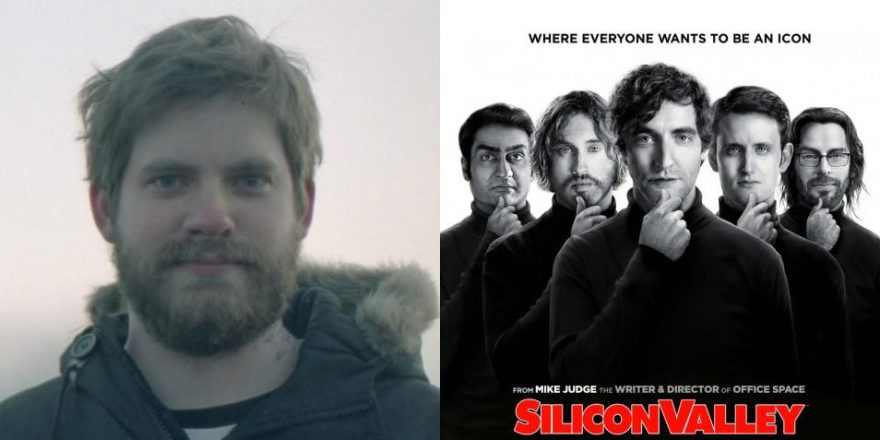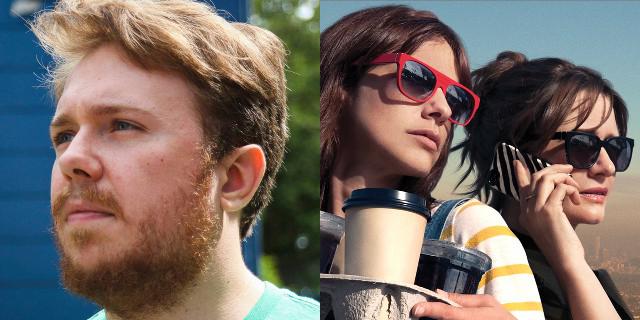If they had made baseball cards for comedy writer-performers of the mid-’90s, I would have collected them voraciously. I was an overweight 13-year-old realist, and the pursuit of girls seemed far-fetched. Late-night, stand-up and sketch comedy instead became my great passion. I made audio recordings of Comedy Central specials and listened to them on the walk to school. I even converted my mom’s garage into a talk-show studio and enlisted friends to help me write and tape several episodes of a late-night-type comedy show. Of course, this was a decade before YouTube, so no one ever saw it. Thank God.
I was introduced to both Louis C.K. and Marc Maron around this time. Maron was a frequent guest on Late Night with Conan O’Brien, and Louis was one of the show’s inaugural writers. At the time Maron was a little over my head and just not silly enough for my pre-teen sensibility. But he was dark and I liked him. My full appreciation for him came when I was urged to listen to his podcast, WTF. He spoke about being on Jay Leno’s Tonight Show (after Conan’s abbreviated stint), and described his pre-tape conversation with Leno as comedian-to-comedian. He was certain not to vilify his fellow stand-up, as so many had. It was refreshing. He spit his words with conviction. It was this conviction (unprovoked defensiveness, really) that made me laugh and endeared me to him.
I first saw Louis C.K. doing a stand-up on Comedy Central. He spoke to the absurdity of things that just are. He was speaking my language. I even memorized one of his routines. It was about waving to someone you know while holding a half-eaten peach, only to realize it’s not the person you thought it was, and now you’re just vigorously waving a mangled peach at a stranger like an insane person. I performed it for some kids at school. They didn’t think it was very funny, which made me love it even more.
Now more than ever, Maron and Louis seem to travel side by side in the cultural conversation. Not just because they came up together, but also because they now both have self-titled TV shows where they play middle-aged, self-examining, relationship-struggling, ice cream-vicing versions of themselves. Headlines aside, what is it they have in common, really? If you’re going to talk about Louie and Maron comparatively, I think you have to look at the worlds of the shows on three levels.
The Crust.
Here we find a basic commonality. The singularity of their perspectives. In both shows, story lines A, B, and C are dominated by their eponymous protagonists. For example, in Maron we know almost nothing about Marc’s slacker assistant Kyle (Josh Brener) except he’s a pain in Marc’s ass. But during the second season of Maron I found myself wondering: What’s a Saturday night like for Kyle? Does he even have any friends? Is Marc his only friend? Maybe if there was something we knew about Kyle that Marc didn’t it would add an interesting layer. Similarly, in the second season of Louie, I would have loved to follow Pamela (Pamela Adlon) home, if only for a moment, to find out what she does when she’s not giving Louie shit. Is she always a bully, or just to Louie? Does she secretly watch Louie’s stand-up specials on Netflix after her kid goes to sleep? To be fair, in this most recent season we did finally see Pamela on her own while shopping for a dress to wear on a date with Louie. A sweet nugget of insight, but it didn’t move her forward
It makes me wonder if the limits of perspective might lead to dramatic monotony down the road. In the case of their predecessor Curb Your Enthusiasm, by the fifth season the engine started to sputter. Even the thrill of a Seinfeld reunion wasn’t able to make up for the (by that time) derivative rhythm of the show’s too-narrow perspective.
To be clear, I’m not making the case that uniqueness should be exchanged for conventionality. I’m just saying that when you’re telling a story that’s potentially hundreds of episodes long, you change, or you go out with a whimper. To Louie’s credit, we did actually see the beginnings of change in the fourth season. The most basic example is the absence of Ian Lloyd’s funky “Louie, Louie, Louie, Louieeeeee…” at the top of the show. Integration of Louie’s stand-up has also been cut back. Little indications that we’re going deeper. In the case of both shows, I hope we’ll move laterally as well.
The Mantle.
I was once told that while writing television, which needs to bring viewers back on a weekly basis, if you’re going to present the viewer with unconventional content, make sure the formatting of the show is familiar. Conversely, if you’re experimenting with format, make sure the content is accessible. Maron adheres to this philosophy. The subject matter is fresh, but the format is familiar. It’s written with commercial breaks in mind. There are acts. Louie, on the other hand, is all over the map. Episodes used to showcase a Side A story and a Side B. Now even the run-time fluctuates to facilitate story. They cut to commercial almost mid-sentence. At “mantle” level, we find the biggest difference between these two series: Maron is a TV show, and Louie happens to be on TV.
Louis C.K. was an indie filmmaker years before his seminal gig at Late Night with Conan O’Brien. Back then, like now, he did it all. What’s interesting to me is the divide this suggests between TV’s “Louis C.K.” and real Louis C.K. TV’s “Louis C.K.” wanders the streets of New York, eyes darting, as if he expected a wrecking ball to take him out at any moment. He binge eats, and flies coach. The real Louis C.K. owns a yacht he captains through New York’s harbor. He’s a boxer, and flies first class. Suffice to say, “Louis C.K.” likely has a lot more in common with most people than does Louis C.K.
I get the sense that “Marc Maron” and Marc Maron are more closely related. Being 100% true to himself is one of Marc Maron’s funniest attributes. He’s incapable of conceding to a false moment, determined to plumb the depths, where he often renders himself alone and in the dark. He also frequently comments on the autobiographical nature of his show. Something I’m familiar with. It makes me wonder if the show isn’t some means of dissecting and reliving for Maron. The best part is, it provides an opportunity to say what you should have said the first time. Who wouldn’t jump at that?
The Core.
The “core” is more of a look inward, I suppose. Why do I so strongly relate to these two middle-aged dudes with ice-cream vices? I think I look to characters like “Louis C.K.” and “Marc Maron” for a glimpse into the future. I’m 30 now, and sometimes the thought of middle age is absolutely frightening to me. There’s plenty to worry about. Will I become a crazy person? Will I have my health? Will I be happy?
At the core, I take comfort in observing these two guys 15 to 20 years my senior, navigating their lives as best they know how, making it work, and letting that be cause for some happiness. More than anything, their greatest commonality, and the thing I really value, is their ability to show us how to take in stride and (ultimately) deal optimistically with what many of us fear the most: being alone. It’s something that can be embraced or battled. “Louis C.K.” at long last has found what it takes to battle and to conquer that general sense of guilt that prevents so many of us from being happy. Will “Marc” live out his version of this story? Or are there other battles he’ll have to tend to first? We’ll see.
Louis C.K. and Marc Maron are among the Babe Ruths and Joe DiMaggios of my youth. My admiration for them grows. Theirs are the baseball cards I don’t trade.






